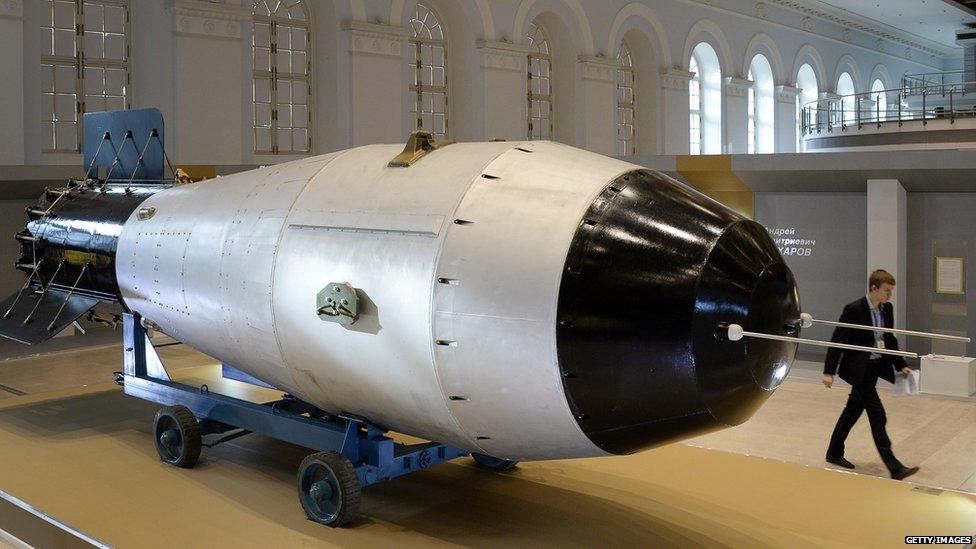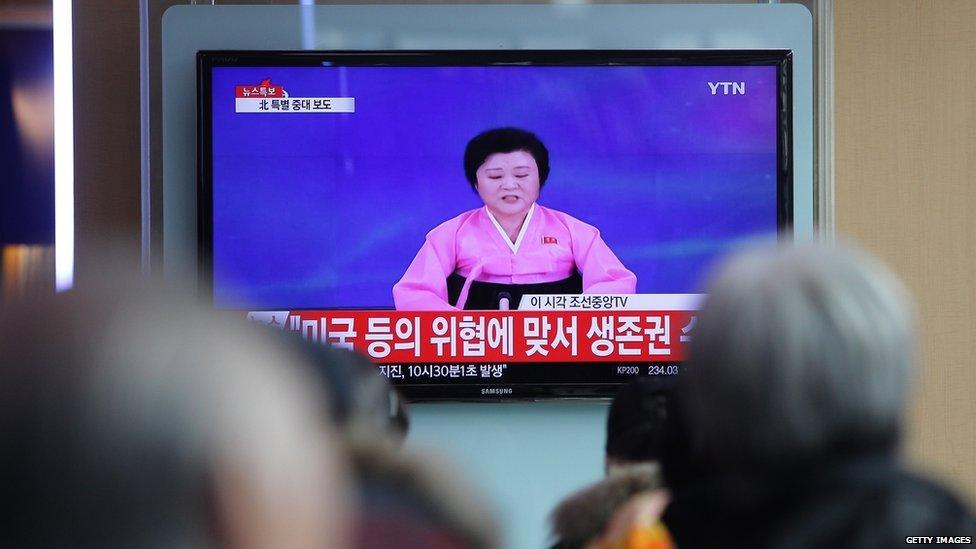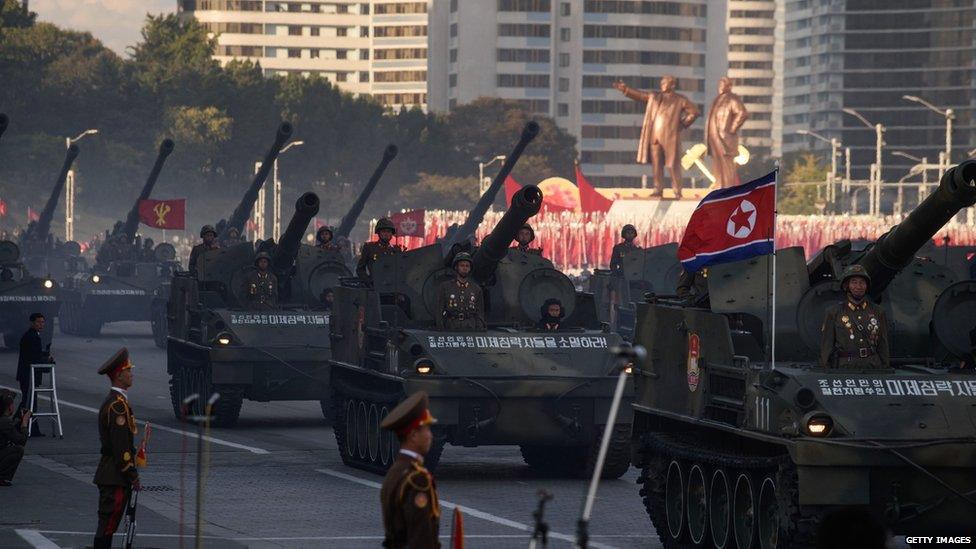What is an H-bomb?
- Published

A hydrogen bomb on display in Russia
The H-bomb is the most destructive weapon ever created by man.
The same power source that fuels the sun is used in the device. This is what makes it far more powerful than other nuclear bombs.
Now North Korea claims to have successfully tested one underground.
To explain exactly what an H-bomb is we've found an expert to answer the really tricky questions.
This IS rocket science, after all.
What is an H-Bomb?
Put simply it's a super-powerful nuclear weapon.
Professor Paddy Regan, professor of physics at the University of Surrey, explains: "People may be familiar with an atom bomb.
"An atom bomb takes a material called uranium and splits it up. That releases a huge amount of energy, a process that's called fission.
"A hydrogen bomb works along a similar theme but has a secondary element to it.

Hydrogen bombs were tested by the UK, Russia and America in the 1960s
"After the fission explosion happens it causes a heating of hydrogen and basically sets off a series of further nuclear reactions."
It's often called a two-stage atomic bomb.
"It's very similar to what goes on in the sun," he says.
How much damage can it do?
"Anything within a mile or two mile radius of where the bomb landed would be completely flattened by the shockwave," says Professor Regan.
"What kills people is not the radiation but the blast.
"Most of the radiation, although not all, goes up into the atmosphere and is spread around the planet.
"Some of these devices are absolutely enormous in terms of their explosive power."
Why is it different to other nuclear bombs?

People in neighbouring South Korea watch the announcement on North Korean state television
Because of the two-stage nature of the explosion, the H-bomb is far more powerful than other nuclear weapons.
"When we talk about sizes and powers of these weapons we often compare it to the explosive TNT," Professor Regan says.
"A regular nuclear bomb is about the same as 10,000 tonnes of TNT explosives, these hydrogen bombs are at least 10 times more powerful."
How difficult is it to make?

North Korea says it's tested four nuclear weapons since 2006
Believe it or not the science behind making the bomb is apparently "pretty straightforward".
According to Regan, scientists in North Korea can "look up on the web how to do it".
After all Britain, Russia and America developed them years ago in the 1960s.
But knowing the science and actually testing such a weapon are very different things.

Kim Jong-un (R) has been leader since 2011
Professor Regan tells us that, as you would expect, engineering the bomb is complex and getting the correct material together is difficult.
"The hydrogen you need isn't normal hydrogen.
"You need unique parts of that element and need a special facility to make those.
"Radioactive material like that is not easy to get, you can't make it in your back garden."
For more stories like this one you can now download the BBC Newsbeat app straight to your device. For iPhone go here, external. For Android go here, external.